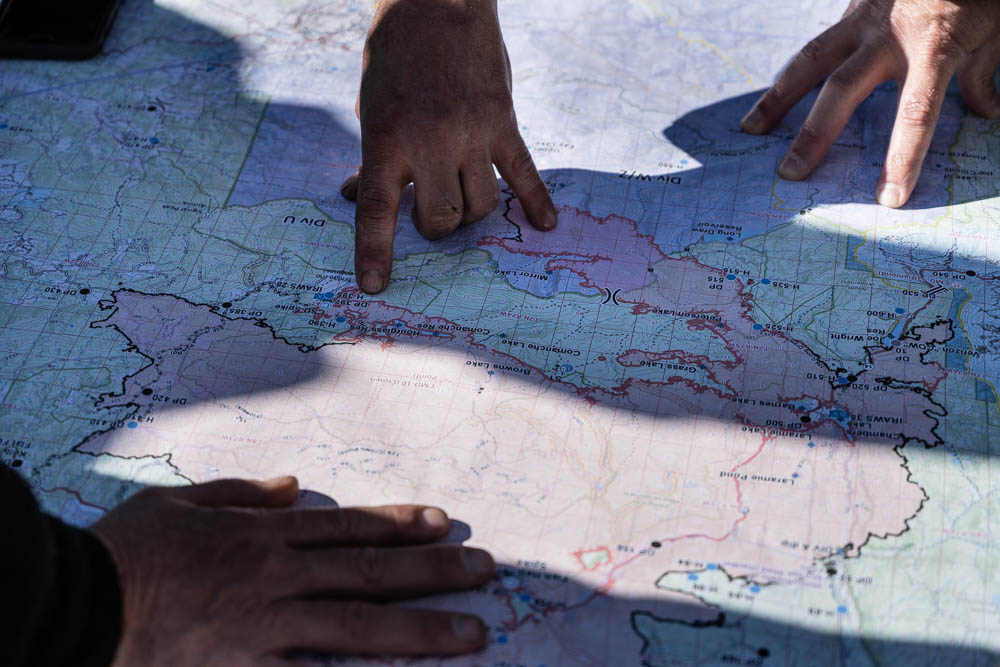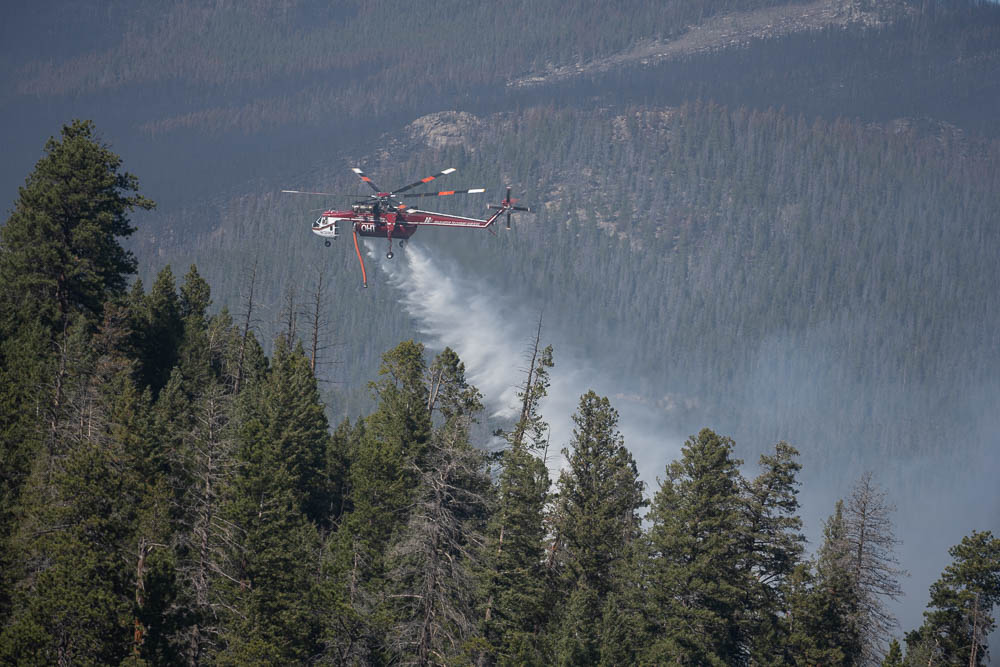
Like many of his fellow Colorado State University alumni, Dan Frazen holds dear the mountainous area west of Fort Collins.
“I consider the Poudre Canyon and Pingree Park my backyard,” he said. “My family and I were picnicking in the Buckhorn Canyon just a few weeks ago. And as an alumnus, I understand the importance of the Mountain Campus to CSU.”
So, it was fitting when Frazen was asked to take a leave from his job as emergency manager for the City of Greeley and join the battle against the massive Cameron Peak Fire, serving as liaison officer. It’s an important job that includes coordinating efforts of incident commanders and working with entities like the Colorado Department of Transportation, Colorado Parks and Wildlife, utility companies, municipal water departments, and the many contractors that support the more than 1,100 firefighters battling the blaze.
Alumni like Frazen have played critical roles in fighting the two-month-old fire, which last week shattered the record for largest wildfire in Colorado’s history at more than 200,000 acres. Not only are numerous Rams on the front lines combatting the fire, now visible from Fort Collins, Loveland, Estes Park and other communities, but CSU facilities also have played pivotal roles.
Firefighters have camped at the Mountain Campus, Christman Field has provided a safe launch and landing site for helicopters dropping water on the fire, and the old Hughes Stadium area has been made available as a base for vehicles and fire crews as the flames march to within a few miles of the Fort Collins city limits.
“It’s kind of a tradition, really,” said Ken Quintana, CSU’s emergency management coordinator. “We don’t charge anything for the use of our spaces, and we provide whatever support the crews need. It’s our way of showing our appreciation for the crews and what they have done to protect the Mountain Campus and other areas.”

High-altitude oasis
The Mountain Campus has been used by firefighters a number of times over the years. When the Cameron Peak Fire broke out in mid-August, CSU offered its facilities to crew leadership for office space, internet and telephone service, along with storage space for emergency food and water rations.
By mid-September, as the fire crept nearer, the Mountain Campus was used as a spike camp for crews, who pitched tents throughout the property for a safe place to sleep near the front lines. Then, when temperatures plummeted into single digits, CSU opened three of its dormitories so firefighters could have a warm place to sleep.
“Given that the fire nearly surrounds the Mountain Campus on three sides, it is remarkable what the firefighters have been able to accomplish under extremely demanding conditions,” said Seth Webb, director of the Mountain Campus. “We are privileged to be able to offer support to the amazing crews on the Cameron Peak Fire who have worked tirelessly to protect the Mountain Campus and other areas at risk. Words cannot express our gratitude, and on behalf of the CSU Mountain Campus, I offer my deepest thanks to the Incident Command.”

Hidden helper
If you were to survey Fort Collins residents, it’s a good bet very few would know where to find Christman Field, let alone its place in Fort Collins aviation history. But the once-bustling airfield, located near the university’s Foothills Campus, has played a key role in battling several recent wildfires, as it is well suited for helicopters.
“Fire crews started using Christman Field during the Hewlett Gulch Fire in 2012 and have been using it ever since,” Quintana said. “We’re definitely on FEMA’s radar as a user-friendly place during natural disasters. The incident command post is usually set up there, and Black Hawk and heavy-lift helicopters work out of there.”
Christman Field, at the very west end of Laporte Avenue, was dedicated in 1929 and served as the city’s main airfield for several decades. World War II pilots trained there, but its most famous visitor was former First Lady Eleanor Roosevelt, who flew into Christman in 1958 to give the commencement address when her grandson, Elliott Roosevelt, Jr., graduated from CSU.
Recently, Christman has been used as a drone center by university researchers.
Boots on the ground
Beyond use of facilities, CSU’s primary contribution to fighting blazes like the Cameron Peak Fire is people. Webb said he has met several people in various roles who, like Frazen, are Rams.
“Based on previous experiences with fires at or near the Mountain Campus (Hourglass Fire of 1994, High Park Fire of 2012, Beaver Fire of 2019, and now Cameron Peak Fire), there are always CSU alums working in a variety of positions on the incidents, from operations and logistics (supervisors and front-line fire fighters), to liaison and public information officers,” Webb said. “The common thread is they are typically Warner College of Natural Resources alumni who also attended the summer field courses at the Mountain Campus. For some of them it’s their first return to the Mountain Campus, fighting the fire.”
In addition, wildfire experts in WCNR and air-quality experts in the Walter Scott, Jr. College of Engineering have been busy sharing information with the media, and are among the nation’s top experts in their fields.
How you can help
The Public Safety Team has compiled a list of resources available to any member of the Ram Family personally affected by the Cameron Peak Fire. You can also learn how to donate to the relief effort at that same link.